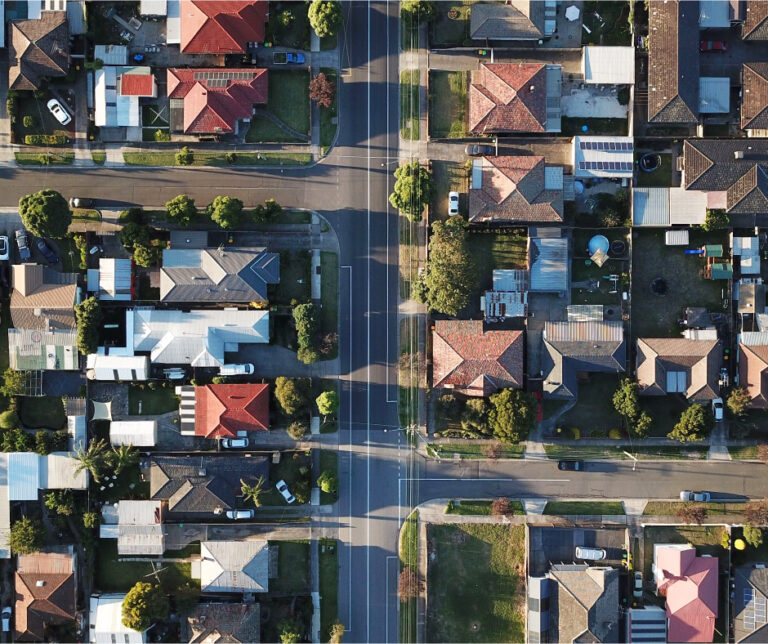TBD Mortgage Underwriting Pre-Approval By Underwriters
Gustan Cho Associates offers TBD mortgage underwriting pre-approvals for homebuyers with less-than-perfect credit. TBD stands for To Be Determined. A TBD Underwriting is when a mortgage loan application is processed and submitted to underwriting without a subject property.
“To-Be-Determined” (TBD) underwriting or what Gustan Cho Associates calls Fast-Track Pre-Approval Loan Commitment Mortgage Process, is a mortgage process where we issue you a conditional approval of a dollar amount within hours of reviewing your files—no purchase contract necessary!
The TBD mortgage underwriting pre-approvals is similar to getting a loan commitment prior to getting a real estate purchase contract. In the following paragraphs, we will be covering TBD mortgage underwriting pre-approvals.
What Is TBD Mortgage Underwriting?
The mortgage underwriter will underwrite the borrower without a subject property.
Once the mortgage underwriter analyzes and sees the borrower meets the agency mortgage guidelines, the underwriter will issue a TBD mortgage underwriting pre-approval. The underwriter issues and signs the TBD mortgage underwriting pre-approval.
Traditional Versus TBD Mortgage Underwriting
With traditional underwriting, the mortgage loan applicant first obtains pre-approval from a mortgage loan originator. The mortgage loan originator reviews the mortgage loan application and reviews the mortgage applicant’s credit scores and credit report.
How Does The TBD Mortgage Underwriting Process Work?
After the mortgage loan originator runs the borrower through the automated underwriting system and gets approve/eligible, the loan officer will issue a pre-approval. With the TBD mortgage underwriting, the mortgage underwriter issues the pre-approval letter. In the following sections, we will cover TBD mortgage underwriting pre-approval letters issued by mortgage underwriters.
Steps in The TBD Mortgage Underwriting Process
The steps in the TBD mortgage underwriting process are different than the pre-approval issued by the loan officer. TBD mortgage underwriting pre-approval is when the file is too difficult to tell whether or not the borrower will get approved. Most manual underwriting files should be a TBD mortgage underwriting pre-approval. The TBD mortgage underwriting process is highly recommended for borrowers with less-than-perfect credit.
Who Issues The Pre-Approval For Homebuyers?
The mortgage loan originator then collects documents such as two years’ tax returns, two years’ W-2s, 60 days’ bank statements, most recent paycheck stubs, and other documents that pertain to qualifying the mortgage loan applicant. The mortgage loan originator then submits the mortgage application to the automated underwriting system for a decision.
Mortgage Underwriter Signs Off on the TBD Mortgage Underwriting Pre-Approval
An approve/eligible per DU FINDINGS and/or LP FINDINGS is what mortgage lenders need to go forward. Once the mortgage loan applicant gets approve/eligible per automated findings, a pre-approval is issued. With a TBD mortgage underwriting pre-approval, the files get assigned to a mortgage underwriter. The underwriter will underwrite the file and issue a TBD mortgage underwriting pre-approval without the subject property.
Automated Underwriting System Approval Process
Some mortgage lenders such as myself have no lender overlays and will go off automated findings. As long as we get approve/eligible per DU FINDINGS and/or LP FINDINGS, we will just go off the findings.
On AUS Approved borrowers, the team at Gustan Cho Associates normally has no issues and close on the mortgage loan. However, even if you get approve/eligible per automated findings, you can run into issues especially if you have higher debt-to-income ratios or issues with underwriter discretion by mortgage underwriters.
Getting Approved For a Mortgage With High Debt-To-Income Ratio
Home buyers who have higher debt-to-income ratios can really run into problems if they run into cost overruns such as higher homeowners insurance premiums or if the underwriter may not count overtime income, bonus income, part-time income, or other income. With FHA Loans, the maximum back-end debt-to-income ratio is capped at 56.9%.
Borrowers With Overtime Income, Part-Time Income, Bonus income
Technically, overtime, part-time, and bonus income can be used to qualify as income as long as the mortgage loan applicant has a two-year history. However, mortgage underwriters have the discretion of either using overtime income, part-time income, and bonus income or discounting the overtime income, part-time income, and bonus income, or not counting that income altogether in the event of declining overtime, part-time, and bonus income.
The Role of The Underwriter During TBD Mortgage Underwriting Process
The underwriter’s decision is not known until the file in underwriting so many home loan borrowers who are counting on this income to qualify do not know the final outcome until the whole mortgage application package is in front of the mortgage underwriter for review.
What Is Underwriter Discretion By Mortgage Underwriters?
If the mortgage underwriter uses the underwriter’s discretion and excludes the overtime, part-time, or bonus income and the mortgage loan borrower needs this income to meet the debt-to-income ratio requirement, the mortgage loan application will be denied.
Mortgage underwriters have a lot of underwriter discretion. Even if the borrower meets the agency minimum mortgage guidelines, the underwriter can deny a loan due to declining income, weakness in the borrower’s ability to repay, and other layered-risk factors. These case scenarios are when a TBD Underwritingis the mortgage approval process of choice.
FHA Back to Work Extenuating Circumstance Due To An Economic Event
HUD launched the used to have the FHA back to work mortgage loan program on August 15, 2013. HUD’s ill-fated FHA back to work loan program shortened the waiting period after bankruptcy and foreclosure to a one-year waiting period. The standard waiting period after bankruptcy is 2 years after the discharge date of the bankruptcy and the standard waiting period is 3 years after foreclosure, deed in lieu of foreclosure, and short sale.
FHA Manual Underwriting Gudelines
All FHA Back to Work mortgage loan applications is manual underwriting where a mortgage loan underwriter will personally review and decide on whether or not to approve the mortgage loan application. Since the inception of the FHA Back to Work Extenuating Circumstances due to an economic event mortgage loan program, many applicants have gotten denials.
The FHA Back to Work mortgage program is a great program where TBD Underwriting will be ideal. We recommended the TBD Underwriting Pre-Approvals due to the high rate of mortgage loan denials.
TBD Mortgage Underwriting Lenders
Not too many mortgage lenders will take on a TBD Underwriting mortgage application. Fortunately, we are able to do TBD Underwriting. TBD Underwriting benefits higher-risk mortgage loan applicants. For borrowers who may have chances of 50/50 in getting a mortgage loan approval, a TBD mortgage underwriting pre-approval is highly recommended.
Benefit of TBD Mortgage Underwriting Pre-Approval
Instead of going through getting a purchase real estate contract and putting down earnest money, spending money for a home inspection, and taking a potential chance of a mortgage loan denial, why not go through a TBD Underwriting and get the mortgage approval first. After you get the mortgage loan approval the only condition left is to get a real estate purchase contract and appraisal and you will get a clear to close.
- Incomplete Documentation
- Solution: Ensure all required documents are gathered and organized before starting the application process. Create a checklist to track what’s needed.
- Changes in Financial Situation
- Solution: Avoid major financial changes, such as changing jobs or making large purchases, until after the mortgage process.
- Credit Score Fluctuations
- Solution: Monitor your credit score regularly and avoid actions that could negatively impact it, such as opening new credit accounts or missing payments.
- Employment Verification Delays
- Solution: Maintain good communication with your employer and inform them in advance about the verification process.
- Miscommunication with Lender
- Solution: Establish clear and regular communication with your lender. Ask for updates and clarification whenever needed.
- Market Changes Affecting Interest Rates
- Solution: Lock in an interest rate and stay informed about market trends to make timely decisions.
- Property Appraisal Issues
- Solution: Choose properties likely to appraise well and work with a reputable real estate agent to avoid overpaying.
- Underwriter Requests for Additional Information
- Solution: Respond promptly to any requests from the underwriter and provide accurate information to avoid delays.
- Expiration of Pre-Approval
- Solution: Be mindful of the pre-approval’s validity period and keep financial documents up-to-date to renew the pre-approval if necessary.
- Legal and Regulatory Changes
- Solution: Stay informed about any changes in mortgage regulations and work with a knowledgeable lender who can navigate these changes effectively.
A TBD (To Be Determined) Mortgage Underwriting Pre-Approval is a process where a lender pre-approves a borrower for a mortgage without identifying a specific property. The approval is based on the borrower’s financial information, creditworthiness, and other qualifying factors, excluding the property details.
Borrowers might choose TBD Mortgage Underwriting Pre-Approval to strengthen their position as buyers in a competitive real estate market. It demonstrates to sellers that they are serious buyers with financing already in place, making their offers more attractive.
Traditional pre-approval involves a preliminary review of the borrower’s financials and is contingent on finding a property. TBD Mortgage Underwriting Pre-Approval involves a more thorough review by underwriters, giving a stronger assurance of the borrower’s ability to secure financing once a property is identified.
Increased Negotiating Power: Sellers see the buyer as a more serious and prepared candidate.
Faster Closing Process: Since much of the underwriting is already completed, the closing process can be expedited.
Identifying Potential Issues Early: Any potential financial or credit issues can be addressed before making an offer on a property.
The required documents typically include:
Proof of income (pay stubs, W-2s, tax returns)
Proof of assets (bank statements, investment account statements)
Credit report
Employment verification
Any additional documentation specific to the borrower’s financial situation
A TBD Mortgage Underwriting Pre-Approval is usually valid for 60 to 90 days. After this period, the lender may need to update the borrower’s financial information and credit report to extend the pre-approval.
While it indicates the borrower’s ability to get a loan, it is not a guarantee. Final loan approval is still contingent on the appraisal and underwriting of the purchased property.
After receiving TBD Mortgage Underwriting Pre-Approval, the borrower should:
Continue to maintain their financial stability and avoid major financial changes.
Begin house hunting within their pre-approved budget.
Work closely with their lender to update any necessary information as they identify potential properties.
The primary drawback is that it requires more upfront documentation and effort than a traditional pre-approval. Additionally, if the borrower’s financial situation changes significantly after the pre-approval, the final loan approval could be affected.
To apply, contact a lender or mortgage broker offering TBD Mortgage Underwriting Pre-Approval. They will guide you through the process and provide a list of required documents.
Not all lenders offer TBD Mortgage Underwriting Pre-Approval, and it may not be available for all types of mortgages. It’s essential to check with specific lenders to determine availability and suitability for your mortgage needs.







